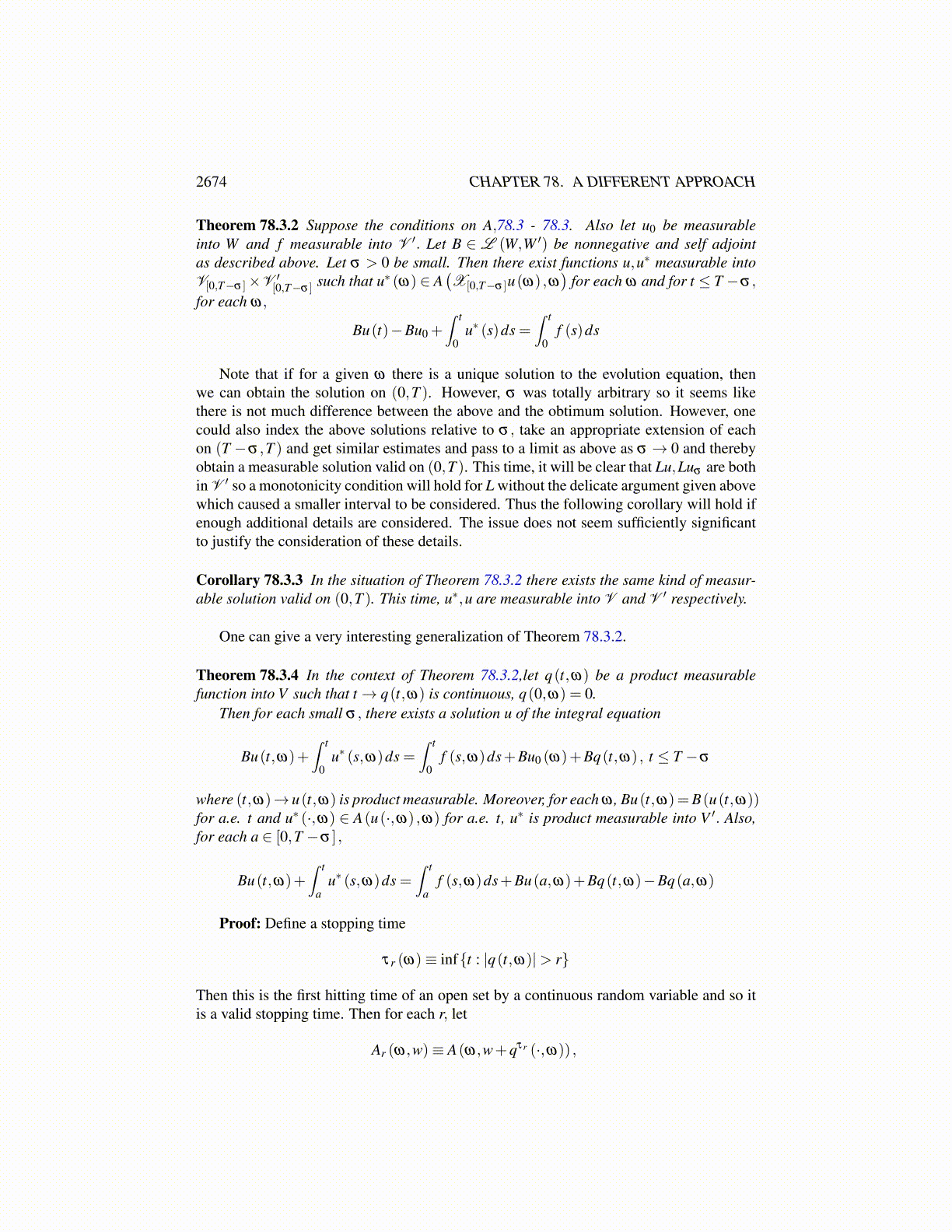
2674 CHAPTER 78. A DIFFERENT APPROACH
exists (u,u∗) which is measurable into V ×V ′ and a sequence with ε (ω) such that asε (ω)→ 0,
(uε(ω) (ω) ,u∗
ε(ω) (ω))→ (u(ω) ,u∗ (ω)) in V ×V ′. Then, taking a further
subsequence, we can obtain the following convergences for fixed ω .
uε(ω) (ω)→ u(ω) weakly in V
u∗ε(ω) (ω)→ u∗ (ω) weakly in V ′
Luε(ω)→ Lu weakly in U ′r
These convergences continue to hold for V and U ′r replaced with VI and U ′
rI and we simplyconsider the restrictions of the functions to I. The problem here is that we do not know thatu is in Ur. This is why it is necessary to take a little different approach.
Letting σ > 0, there exists T̂ (ω)> T −σ such that for each ε (ω) in that sequence,⟨Buε(ω),uε(ω)
⟩(T̂)=⟨B(uε(ω)
(T̂))
,uε(ω)
(T̂)⟩
, Buε
(T̂)= B
(uε
(T̂))
for all ε (ω) in the sequence converging to 0 and also
Bu(T̂)= B
(u(T̂))
,⟨Bu,u⟩(T̂)=⟨B(u(T̂))
,u(T̂)⟩
.
Now let {ei} be the vectors of Theorem 78.1.6 where these are in U . Thus for T̂ ,
⟨Buε ,uε⟩(T̂)=⟨Buε
(T̂),uε
(T̂)⟩
=∞
∑i=1
⟨B(uε
(T̂))
,ei⟩2
Hence, by Fatou’s lemma,
lim infε→0⟨Buε ,uε⟩
(T̂)
= lim infε→0
∞
∑i=1
⟨B(uε
(T̂))
,ei⟩2
≥∞
∑i=1
lim infε→0
⟨B(uε
(T̂))
,ei⟩2
=∞
∑i=1
lim infε→0
⟨Buε
(T̂),ei⟩2
=∞
∑i=1
⟨Bu(T̂),ei⟩2
=⟨B(u(T̂))
,u(T̂)⟩
= ⟨Bu,u⟩(T̂)
(78.3.29)
Then by 78.3.25, we can obtain
12⟨Buε ,uε⟩
(T̂)− 1
2⟨Buε ,uε⟩(0)+
∫ T̂
0ε ⟨Fuε ,uε⟩dt +
∫ T̂
0⟨u∗ε ,uε⟩=
∫ T̂
0⟨ f ,uε⟩ (78.3.30)